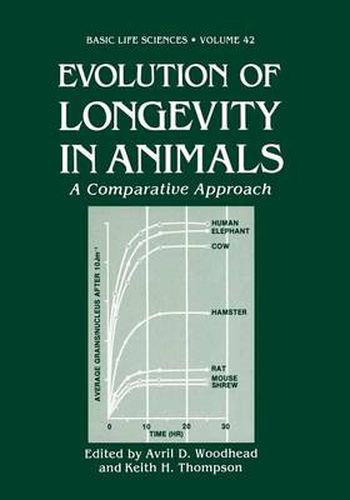Readings Newsletter
Become a Readings Member to make your shopping experience even easier.
Sign in or sign up for free!
You’re not far away from qualifying for FREE standard shipping within Australia
You’ve qualified for FREE standard shipping within Australia
The cart is loading…






This title is printed to order. This book may have been self-published. If so, we cannot guarantee the quality of the content. In the main most books will have gone through the editing process however some may not. We therefore suggest that you be aware of this before ordering this book. If in doubt check either the author or publisher’s details as we are unable to accept any returns unless they are faulty. Please contact us if you have any questions.
The analysis of intra-group correlations between LS and BW at representative intervals yields no consistent support for the hypothesis that lower BW is associated with longer LS. Indeed, among male Wistar rats and C57BL/6J and A/J mice followed since weaning on AL diets, the data suggested that relatively higher BW across the adult LS was generally associated with longer life. Even when the diet was restricted by EOD or RES regimens, this pattern of positive correlations between LS and BW persisted for the C57BL/6J and A/J strains when relative ages were analyzed. However, when BW at absolute ages were correlated with LS, support for the positive relationship between BW and LS was not as forthcoming. When AL groups were assessed beginning at later ages (> 10 months), the pattern of positive correlations was very evident for the Wistar rats–heavier rats tended to liver longer. This pattern was also evident among AL-fed C57BL/6J mice followed since 6 months, but was lost in the 10-month group in this strain. Among A/J mice on AL diets, the pattern became somewhat negative when followed at 6 and 10 months of age. However, among both C57BL/6J and A/J mice placed on EOD diets at 6 and 10 months of age, the pattern clearly tended toward the positive.
$9.00 standard shipping within Australia
FREE standard shipping within Australia for orders over $100.00
Express & International shipping calculated at checkout
This title is printed to order. This book may have been self-published. If so, we cannot guarantee the quality of the content. In the main most books will have gone through the editing process however some may not. We therefore suggest that you be aware of this before ordering this book. If in doubt check either the author or publisher’s details as we are unable to accept any returns unless they are faulty. Please contact us if you have any questions.
The analysis of intra-group correlations between LS and BW at representative intervals yields no consistent support for the hypothesis that lower BW is associated with longer LS. Indeed, among male Wistar rats and C57BL/6J and A/J mice followed since weaning on AL diets, the data suggested that relatively higher BW across the adult LS was generally associated with longer life. Even when the diet was restricted by EOD or RES regimens, this pattern of positive correlations between LS and BW persisted for the C57BL/6J and A/J strains when relative ages were analyzed. However, when BW at absolute ages were correlated with LS, support for the positive relationship between BW and LS was not as forthcoming. When AL groups were assessed beginning at later ages (> 10 months), the pattern of positive correlations was very evident for the Wistar rats–heavier rats tended to liver longer. This pattern was also evident among AL-fed C57BL/6J mice followed since 6 months, but was lost in the 10-month group in this strain. Among A/J mice on AL diets, the pattern became somewhat negative when followed at 6 and 10 months of age. However, among both C57BL/6J and A/J mice placed on EOD diets at 6 and 10 months of age, the pattern clearly tended toward the positive.